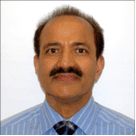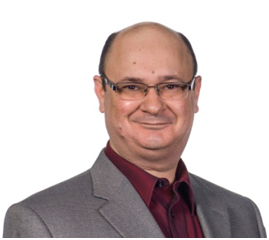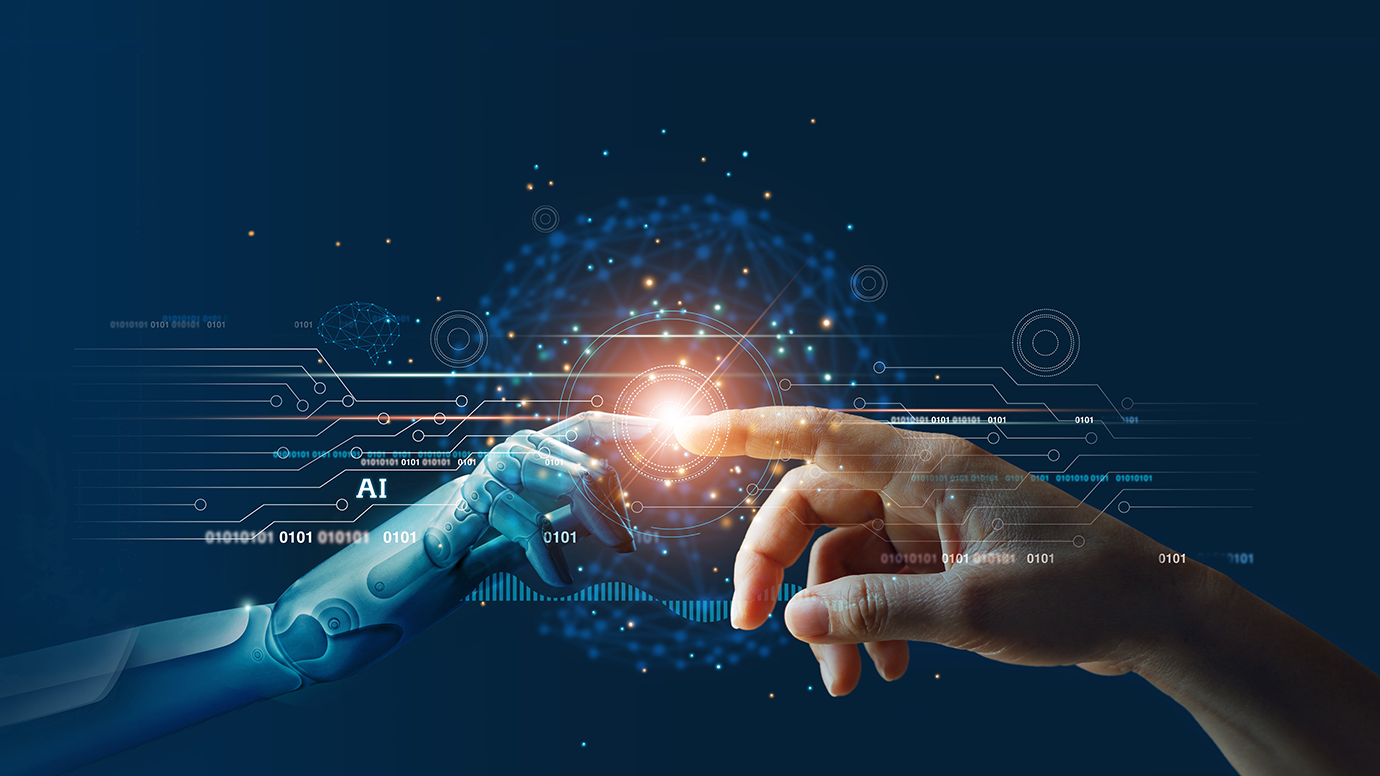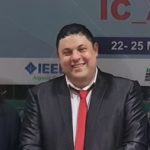S P E A K E R S
Title:
Integrating Neuro-Linguistic Programming Techniques for Enhanced Human-Machine Interaction: perspectives in favor of IEEE events”
Abstract:
This conference aims to explore the implications and opportunities arising from the integration of Neuro-Linguistic Programming (NLP) techniques in the field of human-machine interaction, shedding light on the perspectives offered by IEEE technology.
NLP, as a discipline that studies how thought, language, and behavior interact to influence our experiences, provides a powerful framework for enhancing how Artificial Intelligence (AI) systems interact with users. By analyzing language patterns, non-verbal cues, and user emotions, NLP enables AI systems to better understand individual needs and preferences, leading to increased personalization of the user experience.
This presentation will also examine how the integration of NLP can lead to more natural communication between humans and machines, generating contextually appropriate responses and facilitating emotion detection. Additionally, it will explore how NLP can help overcome language barriers, thereby expanding the accessibility and usability of AI systems.
Through concrete examples and case studies, this conference aims to demonstrate the tangible benefits of integrating NLP into IA, providing participants with an in-depth perspective on how this innovative approach can transform and enhance human-machine interaction.
Biography:
 |
Dr. Raziq YAQUB Professor at NASA Glenn Research Center, Cleveland |
Title:
Diagnosis-Prognosis of Electrical Machines
Abstract:
Most industries are moving toward intelligent health monitoring to minimize shutdowns and maintenance costs. It requires integrating electrical systems and information technology. The talk, divided into three parts, will elucidate that the cloud-based trained models will revolutionize the health monitoring of electrical machines.
The first part will explain the two aspects of health monitoring, i.e., Diagnosis, which refers to the early detection and classification of fault, and Prognoses, which identifies the fault’s evolution to predict the machine’s remaining useful life. It will explain that most of the industry is striving to move from scheduled-based maintenance to predictive maintenance as it is not only cost-efficient but also generates a more detailed report on Fault Diagnosis and Prognosis of Electrical Machines.
The second part will explain the enablers of cloud-based diagnosis and the prognosis of Electrical Machines. It will highlight Artificial Intelligence, Machine learning, Data Analytics, Cloud, Network, and Edge Computing. It will also emphasize that the main challenge is the amount and quality of the data used for model training.
The third part will discuss the data acquisition system, an essential pillar of health monitoring systems. It will also explain the importance of the edge node that will help the microcontroller with data acquisition from the cloud or locally in case of any data loss over the network.
The talk will provide food for thought to the students on exploring innovative techniques. It will also benefit government policymakers, industry leaders, decision-makers, and researchers. The added benefits of the talk will be transferring state-of-the-art knowledge, enhancing interest in research, establishing a collaborative relationship with students and faculty, and familiarizing the students with future/global career opportunities.
Biography:
Dr. Raziq Yaqub is an Associate Professor in the EE&CS Department at Alabama A&M University, USA, and a Research Professor at NASA Glenn Research Center, Cleveland, OH. He earned a Ph.D. in Wireless Communication from Keio University, Japan, and an MBA in Marketing from Fairleigh Dickenson University, New Jersey, USA. He is an inventor of technologies in Cybersecurity of Financial Technologies, Wireless Communications, Smart Grid, and Connected Electric Vehicles. He has 45 issued patents and is a recipient of the “Inventor of the Year Award-2014” from the Inventors Hall of Fame, New Jersey. He received an award of “Excellence in Scholarship and Research 2019” from the President of his university, an award of “Innovator Young Faculty,” an award of “Outstanding Engineering Educator” from the Dean of his college, and “Outstanding Engineer 2020” award from IEEE region 3.
He remained an Executive Director of Toshiba America Research, New Jersey, to lead 4G/LTE, Department head of NIKSUN University, Princeton, New Jersey, to lead Cybersecurity, and Director of Global R&D of Tecvox, Huntsville, AL, USA, to lead wireless charger and media hubs for the automotive industry. He also remained Sr. Consultant to the State of New Jersey to secure an $87M grant, a spokesperson of the Department of Homeland Security in 3GPP”, an invited Researcher at NASA Research Center, Cleveland, Ohio, and an inventor for Wells Fargo, USA.
He also remained Chairman and contributor to standards organizations such as 3GPP, IEEE, WiMAX, MWIF, OMA, Lead Member for ABET accreditation, Chairman of Academic Standards Committee, Chair IEEE Membership Development, Evaluator for technical papers, Ph.D. theses, patents, and grant proposals, Vice Chairman of IEEE Southeast Conference 2019, organizer of numerous international conferences, Invited/Keynote speaker, Panel Moderator/Resource Person in international events. He is a Senior Member of IEEE. He communicates in English, Japanese, Hindi, and Urdu and has 25 years of experience in the industry, government, and academia. More at https://www.linkedin.com/in/dyaqub/.
 |
Moulay AKHLOUFIAdjunct Professor, Laval University, Université of Moncton- Canada
|
Title:
ADVANCES IN DEEP LEARNING FOR MEDICAL IMAGING
(On Line)
Abstract
Recent years have witnessed significant advancements in medical imaging, largely attributed to the remarkable outcomes achieved through the application of deep learning. Various medical disciplines, including ophthalmology and radiology, have reaped the benefits of these advancements.
In this presentation, I will explore recent developments in the use of deep learning for medical imaging. This will encompass the utilization of Convolutional Neural Networks (CNNs) and deep Transformers. I will also demonstrate how the incorporation of deep ensemble learning enhances the performance of specific tasks within this domain.Furthermore, I will delve into the application of deep learning for the detection of eye diseases such as diabetic retinopathy and AMD, among others. Additionally, I will discuss how deep learning and transformers are employed in radiology to identify and diagnose a wide array of diseases. Also, I will showcase practical cases in oncology, particularly for breast cancer and skin cancer detection. Given the significance of comprehending the decisions made by these algorithms, I will provide examples of the utilization of explainability techniques. Furthermore, I will underscore the importance of federated learning in enhancing the training performance of deep models while safeguarding privacy. Finally, I will touch upon prospective research avenues within this field.
Biography
Professor Moulay Akhloufi holds a Bachelor of Science in Physics from the University Abdelmalek Essaadi (Morocco) and a Bachelor of Engineering from Telecom Saint-Etienne (France). He has a Master’s and Ph.D. in Electrical Engineering from Ecole Polytechnique of Montreal and Laval University (Canada), respectively. Additionally, he holds an MBA from Laval University.
Presently, Professor Akhloufi serves as Professor in Computer Science at Université de Moncton, where he leads the Perception, Robotics, and Intelligent Machines (PRIME) research lab, and holds the position of Director at the Center for Artificial Intelligence NB Power. Prior to joining Université de Moncton in 2016, he gained valuable experience in the industry and in technology transfer within the fields of machine vision and robotics.
Professor Akhloufi’s research expertise spans across the domains of artificial intelligence, computer vision, and intelligent robotic systems, where he has contributed to over two hundred publications. Additionally, he holds the distinguished status of being a Senior Member of the Institute of Electrical and Electronics Engineers (IEEE). He is also a member of both the Association for Computing Machinery (ACM) and the Society of Photo-Optical Instrumentation Engineers (SPIE).

